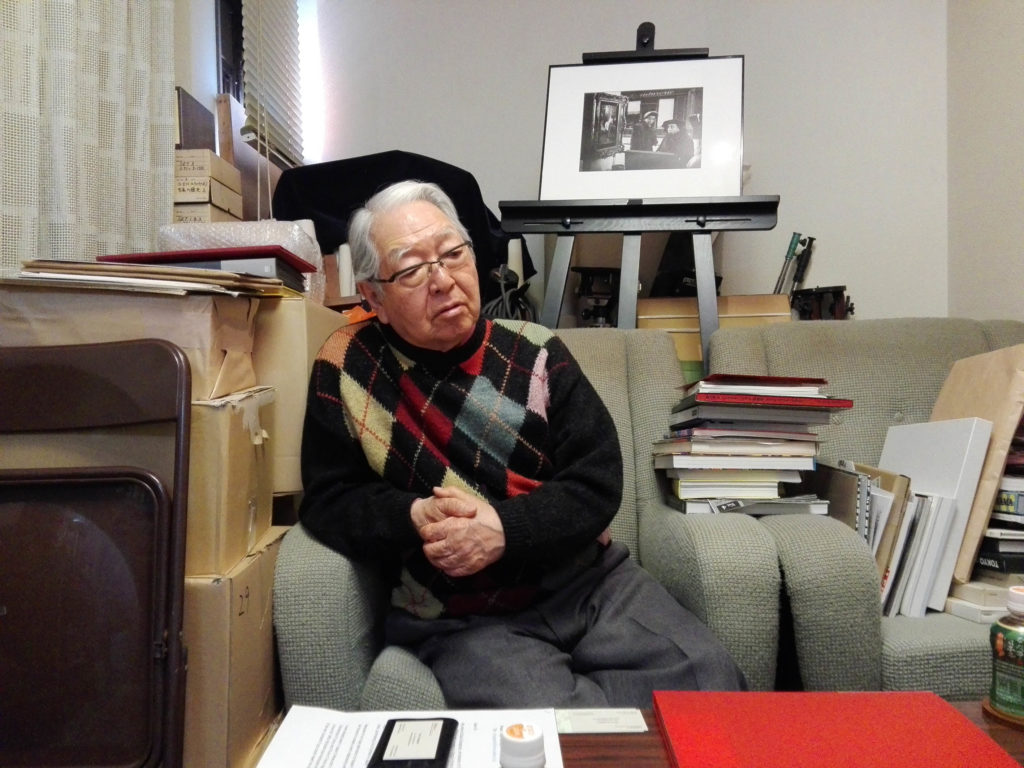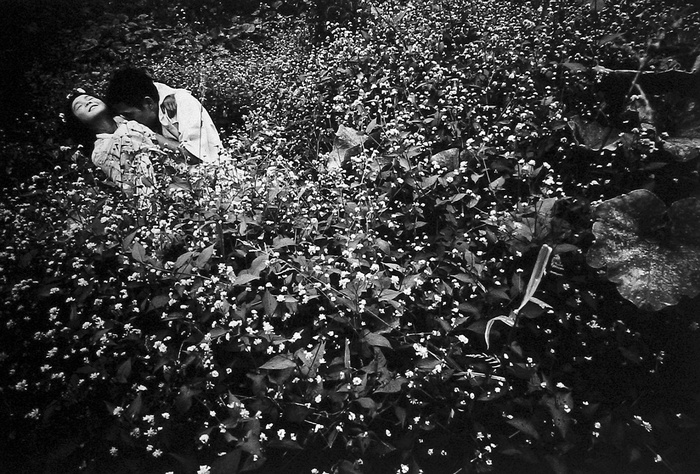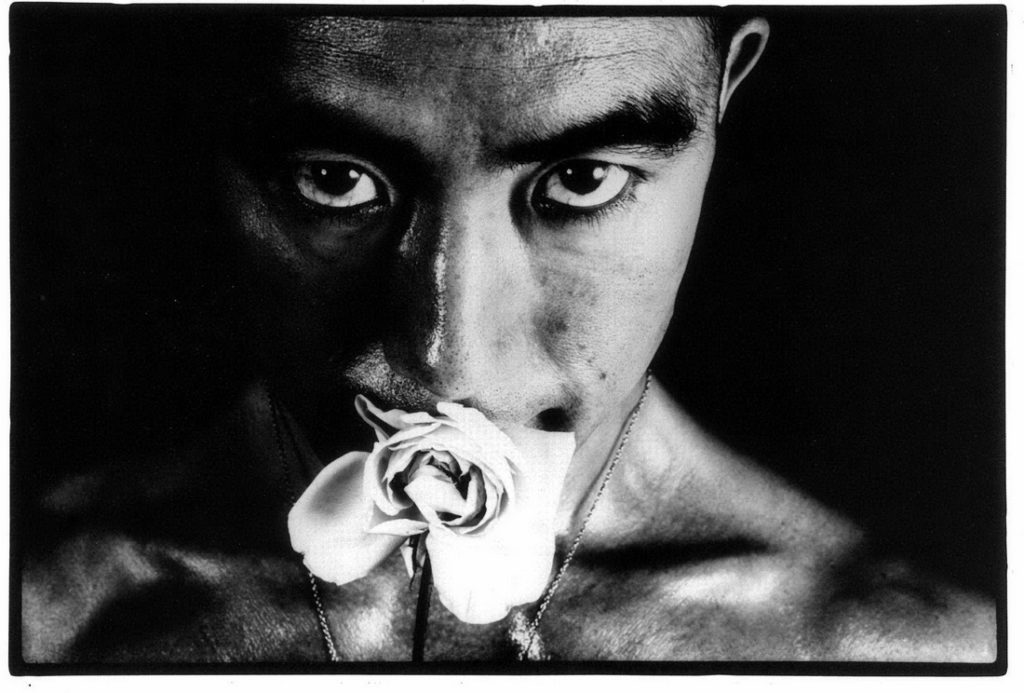Eikoh Hosoe

Eikoh Hosoe (Yonezawa, March 18, 1933) is a Japanese photographer and filmmaker.
He is known for his images in which he explores topics such as death, erotic obsession and irrationality, using the body to capture its secrets and deep emotions. He has collaborated with writer Yukio Mishima and artists such as dancer Tatsumi Hijikata, known for creating Butoh dance. With both of them he has also established a deep bond of friendship.
Biography
His father was a Shinto priest and he began taking photographs of his childhood[1]. While a student at Tokyo College of Photography from 1951 to 1954, Hosoe joined “Demokrato,” a group of avant-garde artists led by artist Ei-Q. In 1960, Hosoe created the Jazz Film Laboratory (Jazzu Eiga Jikken-shitsu) with Shuji Terayama, Shintaro Ishihara and others. The Jazz Film Laboratory was a multi-disciplinary art project aimed at producing highly expressive and intense works such as Hosoe’s black and white short film Navel and A-Bomb (original title: Heso to genbaku, 1960).
The writer Yukio Mishima was his model with whom Hosoe created a series of dark, erotic images centered on the male body, known by the English title Killed by Roses or Ordeal by Roses (Bara-kei, 1961-1962). The images were taken and set in Mishima’s home in Tokyo. This work precedes and anticipates the work of Robert Mapplethorpe[3]. The relationship with the writer ended with his death, committing suicide with the ritual of Seppuku in 1970.
Hosoe filmed the dancer Hijikata during rehearsals and theatrical performances, but also through staging specially created for the camera. In this sense, Hosoe created Kamaitachi, a series of images that refer to legends about the mythological creature of the same name, traditionally associated with the wind. In the photographs, Hijikata becomes a kind of wandering ghost[4][5]. Kamaitachi was published in 1969.
In 1977, Hosoe visited the famous basilica of Gaudi in Barcelona, he was struck by it and decided to photograph it in his own way, through the juxtaposition with the body, leading the reader to imagine that the work of the Spanish architect contains mind, soul and body, just like a living being. The work will be published under the title Gaudi no Uchu (Gaudi’s cosmos) in 1983.
Beginning in 1975, he taught photography at various universities and schools in Japan, including Tokyo Polytechnic University. Every year, Hosoe holds a unique photographic workshop: the Naked School Nude workshop in which a maximum of 15 people participate. According to Hosoe, the nude body represents a universal condition of the human being that can transcend the limits of nationality, race and culture.
Hosoe has been the director of the Kiyosato Museum of Photographic Arts (Kiyosato, Yamanashi) since its opening in 1995.
Among the awards received, in addition to those of his own country, it is worth mentioning the prestigious Visionary Award 2006, an international award given within the Lucie Awards: he was the first Japanese to receive it, his name appears next to those of Cornell Capa, Henri Cartier-Bresson, Gordon Parks, William Klein, Zana Briski and many others.
Butō (or sometimes reported as butoh) is the name of various techniques and forms of contemporary dance inspired by the movement Ankoku-butō (暗黒舞踏? “dark dance”) active in Japan in the fifties. Typical aspects of butō are the nudity of the dancer, the body painted white, the grotesque grimaces inspired by classical Japanese theater, the playfulness of the performance, the alternation of extremely slow movements with frenetic convulsions. There is no typical staging of butō. Its origins are traced back to Tatsumi Hijikata and Kazuo Ōno.

Eikoh Hosoe
Kamaitachi
Gelatin silver print
Paper size 16×20 inch
Firmata al fronte e al retro

Eikoh Hosoe
Mishima
“Ordeal by Roses #32” 1961
Gelatin silver print
Paper size 16×20 inch
Firmata al fronte e al retro
Discover Hosoe's most famous series
Eikoh Hosoe, a Great Master of Photography in Japan
The thought of Eikoh Hosoe
Eikoh Hosoe:does the photograph reflect the truth?
EIKOH HOSOE╱EMBRACE
Book
Photographs available on request – Origin Archives Eikoh Hosoe, Tokyo
